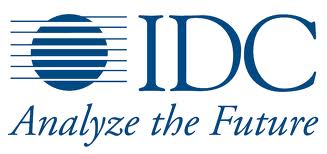Singapore and India, August 11, 2015 – According to International Data Corporation’s (IDC) Quarterly Mobile Phone Tracker, 26.5 million smartphones were shipped to India in the second quarter of 2015 – up 44% from 18.4 million units for the same period last year. This strong second quarter performance saw smartphone shipments grow by 19% following a sluggish first quarter this 2015.
However, this growth was specific to smartphones only as the overall Indian mobile phone market shrunk by 6% this second quarter of 2015 on a year-on-year (YOY) basis. Vendors only shipped 59.4 million units in 2015Q2 compared to 63.2 million units shipped in the second quarter of 2014.
The growth in the smartphone market was helped by vendors using online retail or eTail to penetrate the market. According to Kiran Kumar, Research Manager with IDC’s India Mobile Phone team, “eTailers have opened additional avenues for growth for many vendors in India, who would have otherwise struggled to get a hold in the complex distribution network”. Although India remains a retail dominated market, vendors such as Lenovo and Xiaomi have used etailing channels in India to rapidly expand their presence. “The share of smartphone shipments through etailers increased for most of the key vendors in Q2,” added Kumar.
In addition, Chinese vendors have tripled their shipments YoY in India and doubled quarter-on-quarter (QoQ). Lenovo, Xiaomi, Huawei and Gionee alone accounted for 12% of the total smartphone market in the second quarter, double from a year ago. “As China started to slow down, most vendors from the country have targeted India as the next big growth market for smartphones,” said Kiranjeet Kaur, Research Manager with IDC’s Asia/Pacific Mobile Phone team.
The new entrants to the Indian market have utilized specific strategies to drive sales growth, according to Kiranjeet Kaur. “Key to the success of the Chinese vendors has been popular flash sales through online players such as Flipkart, Snapdeal and Amazon. At the same time, they also focused on bringing more 4G phones at affordable US$100-150 price points which is left unattended by Indian and global vendors”. Except for Lenovo, the top vendors in the second quarter still had majority of their shipments going through traditional channels.
Smartphone Vendor Highlights:
Samsung remained the leader in the Indian smartphone market despite experiencing a QoQ shipment decline while growing shipments on a YoY basis. The resultant volume growth YoY came from their phones in the affordable segment such as the relatively new Galaxy J1, and older models such as the Galaxy Core. Performance was not boosted by the first full quarter of sales for the new Galaxy S6 and S6 edge.
Micromax made a comeback this second quarter of 2015 with 60% QoQ growth. Even though its AndroidOne phones and the Yu Yureka phones got off to a slow start, its other smartphones in the US$50-150 price segment, where it is traditionally strong, performed well.
Intex captured the number 3 position launching a slew of new models. It remains strong in sub-US$100 segment, which contributes to at least four-fifths of its overall volume. Also, it forayed into the 4G space with Aqua 4G Plus with a small initial volume.
Lava continues to feature in the top 5 of the India Smartphone business. Their recent investments on local manufacturing and their plans for the future make them a serious player in India.
Lenovo, as a group, is the only China based OEM in the top five list in India. It captured 6% of the market as its Lenovo and Motorola brands continued to record strong shipments through its online channel partners. The entry level 4G smartphones, A6000 and A7000, initially exclusively available through eTailers, helped lift Lenovo in to the top vendor league in India.
While both China and India offer a huge consumer base, there are few differences between the two markets including:
- In the latest quarter, almost one-fifth of the smartphones sold in China were sub-US$100, while in India almost 50% of all smartphones shipped during the same period were in this price segment;
- Apple has 19 Apple Stores in China at present, whereas India doesn’t have an Apple Store;
- The high-end Galaxy S6 and S6 Edge had a small contribution to the total Samsung smartphone sales in India, but a considerably larger contribution in China;
- Unlike China, we don’t expect the Indian consumer to make a quick switch to the smartphone, and vendors should keep in mind that they are here for the long haul.
IDC expects India to maintain a double digit growth rate in the smartphone market over the next few years as people switch to smartphones and gradually upgrade to 4G smartphones as well. By 2017, we expect India to overtake USA to be the second largest smartphone market globally.
About IDC Trackers
IDC Tracker products provide accurate and timely market size, vendor share, and forecasts for hundreds of technology markets from more than 100 countries around the globe. Using proprietary tools and research processes, IDC’s Trackers are updated on a semiannual, quarterly, and monthly basis. Tracker results are delivered to clients in user-friendly excel deliverables and on-line query tools. The IDC Tracker Charts app allows users to view data charts from the most recent IDC Tracker products on their iPhone and iPad.
About IDC
International Data Corporation (IDC) is the premier global provider of market intelligence, advisory services, and events for the information technology, telecommunications, and consumer technology markets. With more than 1,100 analysts worldwide, IDC offers global, regional, and local expertise on technology and industry opportunities and trends in over 110 countries. IDC’s analysis and insight helps IT professionals, business executives, and the investment community to make fact-based technology decisions and to achieve their key business objectives. Founded in 1964, IDC is a subsidiary of IDG, the world’s leading technology media, research, and events company. To learn more about IDC, please visit www.idc.com. Follow IDC on Twitter at @IDC.

